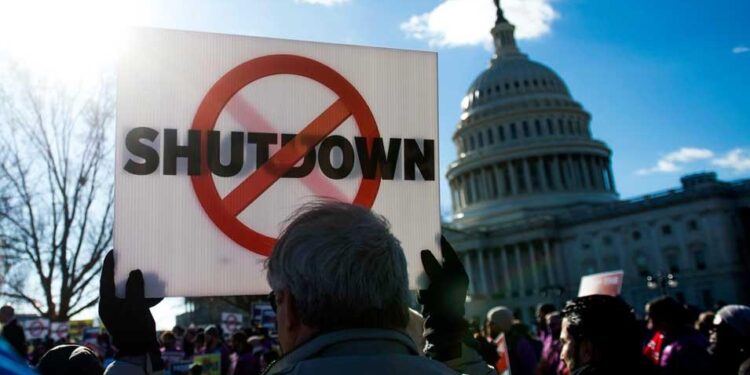As the government shutdown stretches into an unprecedented duration, the looming threat of permanent budget cuts has become ensnared in a complex web of political maneuvering. What began as a standoff over funding priorities has now evolved into a high-stakes battle with far-reaching consequences for federal programs and services. NPR examines how partisan divisions are deepening the impasse, raising concerns about the long-term impact on government operations and the millions who depend on them.
The Political Deadlock Deepens Amid Shutdown Uncertainty
As negotiations stall, both parties remain entrenched in their respective positions, making any near-term resolution increasingly unlikely. The impasse has sparked growing concerns over the potential long-term ramifications that could arise if essential funding is not restored promptly. Stakeholders across various sectors are bracing for the possibility that the shutdown could lead to permanent budget cuts, jeopardizing vital public services and delaying critical programs.
Key sticking points include:
- Disagreements over spending levels: Lawmakers continue to clash on how much should be allocated towards social programs versus defense.
- Policy riders: Controversial provisions tied to unrelated legislation are complicating the approval process.
- Political posturing: Both sides seek to avoid blame but have made little progress in compromising.
| Impact Area | Potential Consequence |
|---|---|
| Healthcare | Delayed patient services and funding cuts |
| Education | Reduced grants and postponed infrastructure projects |
| National Security | Compromised readiness and limited training exercises |
Economic and Social Impacts Loom as Budget Talks Stall
The prolonged stalemate in budget negotiations is creating growing anxiety across multiple sectors, with the potential for deep cuts threatening to destabilize both economic stability and social programs. Key industries such as healthcare, education, and infrastructure development face uncertain funding, risking long-term setbacks. Community organizations that depend on federal grants fear the immediate impact, as delays stall critical projects and services. Economists warn that a continued impasse could slow growth, drive up unemployment, and undermine public trust at a time when recovery remains fragile.
The human cost is equally concerning. Vulnerable populations may bear the brunt of austerity measures, as social safety nets like food assistance and housing subsidies stand on precarious footing. Below is a snapshot of potential budget reductions and their areas of influence:
| Sector | Estimated Cuts (%) | Projected Impact |
|---|---|---|
| Healthcare | 12% | Reduced access to essential services |
| Education | 8% | Fewer resources for public schools |
| Infrastructure | 15% | Delay in critical maintenance projects |
| Social Services | 10% | Increased hardship for low-income families |
- Small businesses face reduced support and loan programs.
- Public safety budgets are at risk, affecting emergency services.
- Environmental initiatives may lose crucial funding.
Experts Call for Bipartisan Solutions to Avoid Permanent Cuts
Facing mounting pressure from economic analysts and policy veterans alike, calls for a unified approach to prevent long-term financial damage have intensified. Experts emphasize that purely partisan negotiations have led to an impasse, risking severe and irreversible cuts in essential programs. Their consensus is clear: sustainable solutions require cooperation beyond party lines to safeguard public services and national stability.
Key recommendations proposed by experts include:
- Establishing a bipartisan task force charged with drafting balanced budget proposals
- Prioritizing funding for critical infrastructure and social safety nets
- Implementing transparency measures to monitor spending and accountability
| Priority Area | Potential Impact of Cuts | Expert Urgency Level |
|---|---|---|
| Healthcare | Reduced access for vulnerable populations | High |
| Education | Compromised resources and quality | Medium |
| Infrastructure | Delayed maintenance and development | High |
Final Thoughts
As the government shutdown persists, the prospect of permanent budget cuts remains entangled in political stalemate, underscoring the deep divisions that continue to shape the nation’s fiscal future. With no clear resolution in sight, stakeholders on all sides face mounting pressure to negotiate solutions that balance economic realities with policy priorities. The unfolding developments will be closely watched, as the stakes for government programs and public services grow increasingly high.































